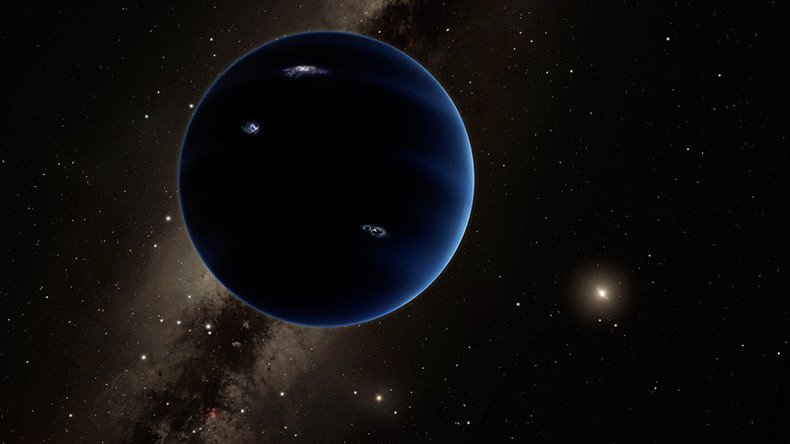Mysterious ‘Planet 9’ not victim of interstellar abduction, study finds

Scientists continue to scour the edge of our solar system for the mysterious and elusive ‘Planet 9,’ but a new study claims that, wherever it is, it’s native to our solar system and is not an exoplanet hijacked from another star system.
The idea of a giant free-floating planet (FFLOP) at the edge of our solar system was first proposed in 2014. Two years later, a team from Sweden's Lund University proposed that Planet 9 was an exoplanet, drawn in from outside our own solar system.
This theory has now been debunked by Dr. Richard Parker from the Department of Physics and Astronomy at the University of Sheffield along with several colleagues from ETH Zurich.
‘Exoplanet hop’: #NASA release epic travel poster to mark landmark discovery https://t.co/bMqZKPza8R#spacepic.twitter.com/A8jYp4KD8p
— RT (@RT_com) February 23, 2017
"In this work, we have shown that – although capture is common – ensnaring planets onto the postulated orbit of Planet 9 is very improbable. We're not ruling out the idea of Planet 9, but instead we're saying that it must have formed around the sun, rather than captured from another planetary system," Parker said.
Parker’s team simulated the so-called ‘stellar nursery’ stage of our sun's early life (roughly 4.5 billion years ago). They found that even in the most favorable conditions for the interstellar pickpocketing scenario, there was only between a one and six percent chance planets would be captured and follow an orbit similar to Planet 9.
As the team applied a few additional constraints to their simulation, the probability of interstellar planetary capture dropped to zero.
NASA #exoplanet discovery ‘is just a beginning’ - #space reporter Robin Seemangal https://t.co/j6zv2BaKRypic.twitter.com/kFF7szXe3A
— RT (@RT_com) February 23, 2017
“Planet 9 could have formed close to the sun like the other planets. Then, however, while the solar system was young and dynamically active, gravitational interactions could have scattered Planet 9 to the outer regions of the solar system on a stable orbit,” Dimitri Veras, an astrophysicist working at Britain’s University of Warwick, told Newsweek.
Astronomers have spent centuries searching for a large planetary body at the edge of our solar system that would explain the unusual behavior of icy objects in the Kuiper belt that encircles our solar system without success.
Planet 9’s existence has yet to be definitively confirmed, however, as scientists have yet to detect, let alone directly observe, the celestial body.
16 stars could come within two parsecs – or 61 trillion kilometers – of the sun https://t.co/G1F3bUaHK5
— RT America (@RT_America) September 1, 2017
Astronomers and astrophysicists are still in the process of scouring the Kuiper Belt for more objects that could point the way to the mysterious giant planet; a tall order given that such a massive object would take between 10,000 and 20,000 years to orbit the sun.
Planet 9 is believed to be at least 10 times the size of Earth, which makes it unlikely that it could have formed so far out from the sun, initially fuelling speculation that it could have been taken from another planetary system.












